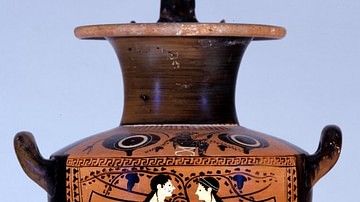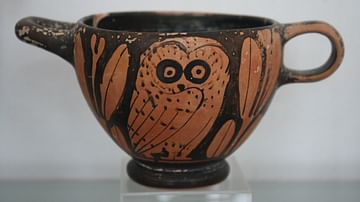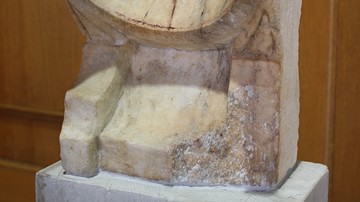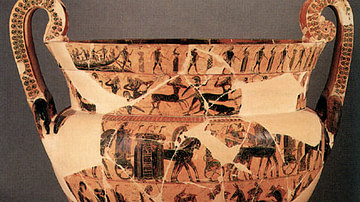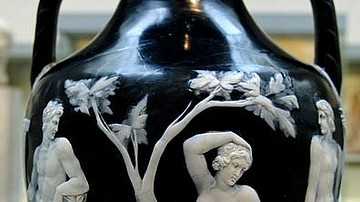Server Costs Fundraiser 2024
Help our mission to provide free history education to the world! Please donate and contribute to covering our server costs in 2024. With your support, millions of people learn about history entirely for free every month.
$3890 / $18000
Video
by Getty Museum
published on 19 February 2016
The word "plastic" comes from the Greek verb plasso, meaning, "I model," and describes vases made via molding, which allowed artisans to reproduce complex human, animal, or plant shapes. Potters added handles and mouths to molded clay parts, creating small numbers of nearly identical mass-produced vessels.
This video focuses on an ancient Athenian drinking cup from about 470 B.C., made, in part, by molding. It was designed in the shape of two joined heads: the hero Herakles, and a woman. This presentation explains the cup's construction, painting, and firing.
Love art? Follow us on Google+ to stay in touch: http://bit.ly/gettygoogleplus
Double-Headed Wine Cup with Herakles, Class M: Vatican Class, about 470 B.C., Republic of Italy
License & Copyright
Original video by Getty Museum. Embedded by Mark Cartwright, published on 19 February 2016. Please check the original source(s) for copyright information. Please note that content linked from this page may have different licensing terms.
The video and its description text are provided by Youtube. This website claims no authorship of this content; we are republishing it for educational purposes.
Cite This Work
APA Style
Museum, G. (2016, February 19). Making a Molded Athenian Vase.
World History Encyclopedia. Retrieved from https://www.worldhistory.org/video/754/making-a-molded-athenian-vase/
Chicago Style
Museum, Getty. "Making a Molded Athenian Vase."
World History Encyclopedia. Last modified February 19, 2016.
https://www.worldhistory.org/video/754/making-a-molded-athenian-vase/.
